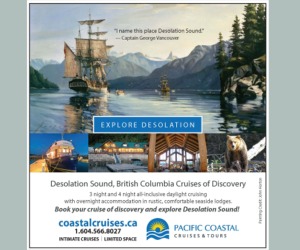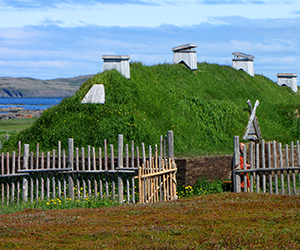CANADA HISTORY - Prime Ministers
John A Macdonald

Sir John A. Macdonald, Canada’s first Prime Minister, is rightfully considered a founding father of the nation. His political career spanned several decades, during which he played a central role in the creation and expansion of Canada. Macdonald was instrumental in bringing the provinces of Upper and Lower Canada, Nova Scotia, and New Brunswick together in 1867 to form the Canadian Confederation, and later he successfully brought British Columbia, Prince Edward Island, and the vast Northwest Territories into the fold. A Scottish Highlander by birth, Macdonald was fiercely proud of his heritage, and his remarkable political instincts allowed him to navigate the turbulent waters of 19th-century Canadian politics with wisdom, pragmatism, and ambition.



Macdonald's political philosophy was deeply pragmatic. He realized early on that successful governance in Canada required a broad coalition of interests, particularly between English and French Canadians. His great political rival, George Brown, led the Clear Grits, a faction that was virulently anti-Catholic and opposed to accommodation with French Canadians. Macdonald, in contrast, forged an alliance with George-Étienne Cartier, the leader of the French-speaking population in Lower Canada (now Quebec), forming a powerful partnership that would guide the movement toward Confederation.

In 1864, Macdonald’s Conservative government was defeated in the House of Commons, and the Governor General, Lord Monck, was preparing to dissolve the assembly. At this crucial moment, George Brown approached Macdonald with an offer to form a coalition government. The offer was accepted, and under the leadership of Étienne-Paschal Taché, the Confederation movement began in earnest. Macdonald and his colleagues traveled to Charlottetown, Prince Edward Island, to meet with the Maritime leaders, who were contemplating their own union. With charm, diplomacy, and plenty of champagne, Macdonald convinced enough of the delegates to explore the idea of a larger Canadian union.

The following year, the leaders reconvened in Quebec City, where they hammered out the "Quebec Resolutions," which formed the basis of the British North America Act. Although Macdonald had been a late convert to federalism, he became its most ardent supporter. Much of the text of the British North America Act, which officially created Canada, was written in Macdonald’s own hand. His vision for the new country was inspired by lessons learned from the American experience, particularly the need to avoid the pitfalls of states’ rights that had contributed to the U.S. Civil War. In Macdonald’s view, Canada required a strong central government to maintain national unity.
In 1866, Macdonald, Brown, and several other Fathers of Confederation traveled to London to finalize the terms of Confederation with the British government. While in England, they met with Queen Victoria and worked tirelessly to ensure the passage of the British North America Act. During their time in London, the Fenians—an Irish nationalist group based in the United States—invaded Canada. Although their efforts were quickly repelled, the invasion inflamed anti-American sentiment in Canada and helped galvanize support for Confederation in New Brunswick and Nova Scotia. In 1867, the British Parliament passed the British North America Act, setting July 1, 1867, as the date when the new nation of Canada would be born.

One of Macdonald’s most significant achievements as Prime Minister was the acquisition of Rupert’s Land, a vast territory owned by the Hudson’s Bay Company. The United States had shown interest in purchasing the land, offering $10 million to the British government, but Macdonald successfully negotiated the purchase of Rupert’s Land for £300,000, adding a massive swath of territory to Canada. However, the transfer of the land sparked unrest among the Métis population in the Red River settlement, led by Louis Riel. The Métis, feeling excluded from the negotiations, formed their own government, and the situation escalated into the Red River Rebellion.

Macdonald’s political challenges did not end with Manitoba. British Columbia, isolated from the rest of Canada by the Rocky Mountains, was being courted by the United States, and many residents favored annexation. Macdonald made a bold offer to British Columbia: if they joined Confederation, Canada would build a transcontinental railway to connect the province with the rest of the country. This promise proved to be one of the most ambitious projects of Macdonald’s career, and it became the defining issue of his later years in office.

Macdonald’s second term in office saw the completion of the Canadian Pacific Railway, with the last spike driven at Craigellachie in 1885. This achievement symbolized Macdonald’s vision of a united, transcontinental Canada. His "National Policy" rested on three pillars: the transcontinental railway, increased immigration to the western provinces, and a protective tariff to support Canadian industry. This policy helped spur economic growth and solidify Canada’s independence from the United States.

Macdonald’s final political battle came in 1891, when he won re-election for the last time. However, the campaign took a heavy toll on his health, and he passed away on June 6, 1891, at the age of 76. His death was mourned across Canada and throughout the British Empire. As the "Father of Confederation" and Canada’s first Prime Minister, Sir John A. Macdonald left an indelible mark on the country he helped to create. His vision of a united Canada, stretching from sea to sea, remains one of the most important legacies in Canadian history.
Cite Article : Reference: www.canadahistory.com/sections/documents/documents.html
Source: NA



